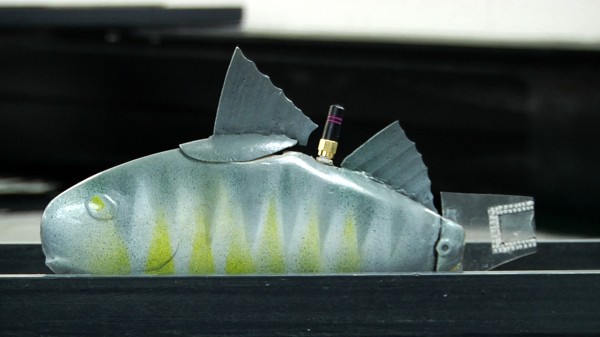
Robotic fish are not the latest Hollywood horror flick but they are looking to make a “splash†and be released in the wild to monitor and transmit conditions from bodies of water to researchers ashore. In tandem, zoologists and engineers have developed some pretty hi-tech robotic fish mimicking their live counterparts swimming behavior. Scientists from Michigan State University recently won funding from the National Science Foundation to further their research robotic fish. The team has developed a 9-inch robotic fish prototype electro-active polymer “fins†using electricity to change shape. As voltage is applied the polymer twists and reacts a lot like real muscle. MSU’s robo-fish will have integrated sensors recording things like temperature, dissolved oxygen, pollutants and harmful algae. Right now the fish is not ready for the strong-current waters of the ocean but should be a good candidate for calmer, inland bodies of water. More information and video after the break.
National Geographic recently posted a photo news showcase on this trend of robots mimicking other sea creatures from fish, lobsters, jellyfish and even penguins. With the advances in electro-active polymers mimicking muscle and nano-technology allowing for integration of small sensors and transmitters, it would be interesting to see these in use down the road in the hobby. Maybe a robotic fish aquarium mimicking the beauty of nature without the maintenance or even a fish swimming thorough your aquarium giving you accurate measurements on nutrients, parameters and flow characteristics. How about a robo-frag that could transmit lighting and nutrient information from a specific location in your tank? Probably would cost more than a chip of a “My Miami†chalice but would help you find the best spots for specific corals in your tank.
[via Engadget, PhysOrg, National Geographic]



